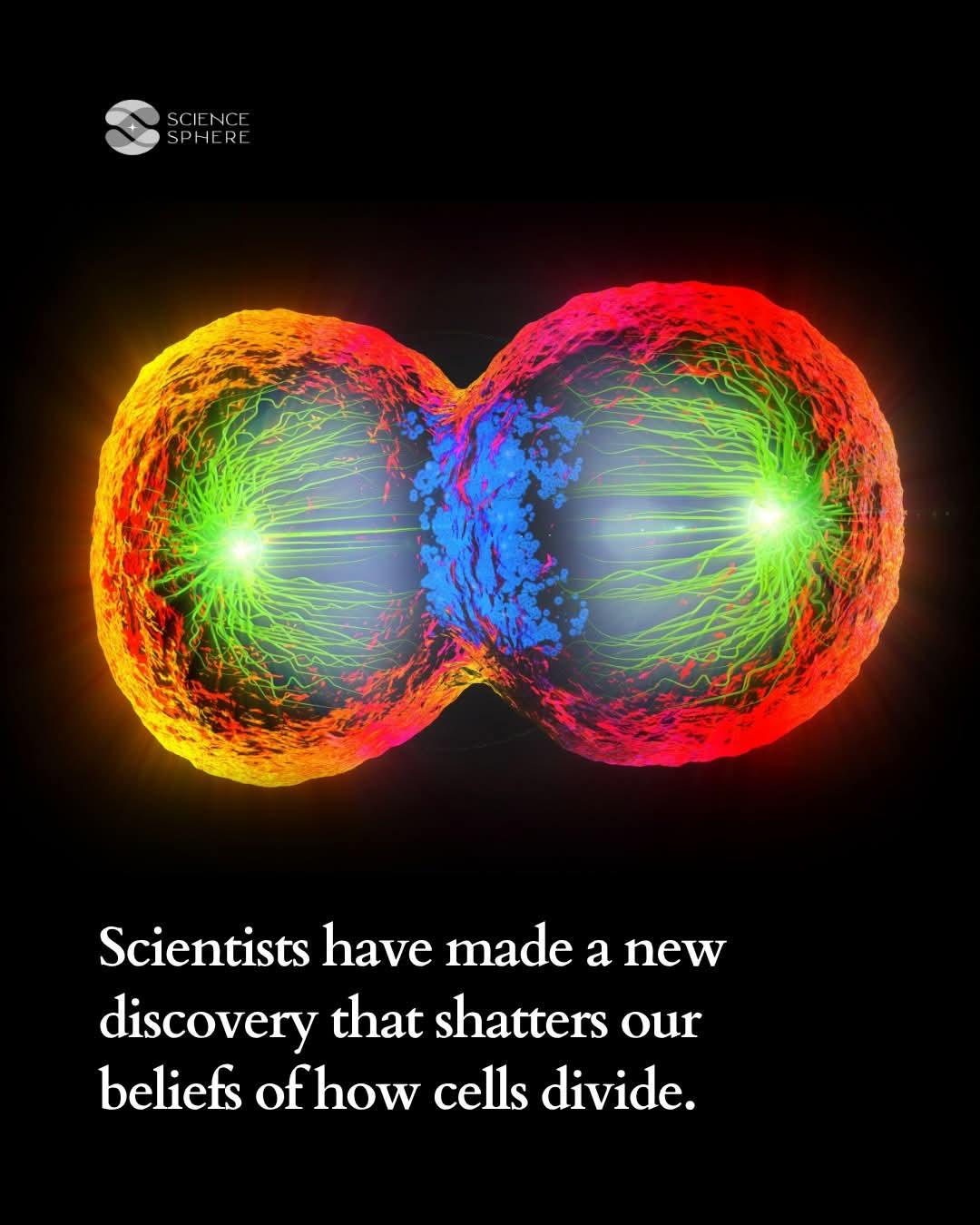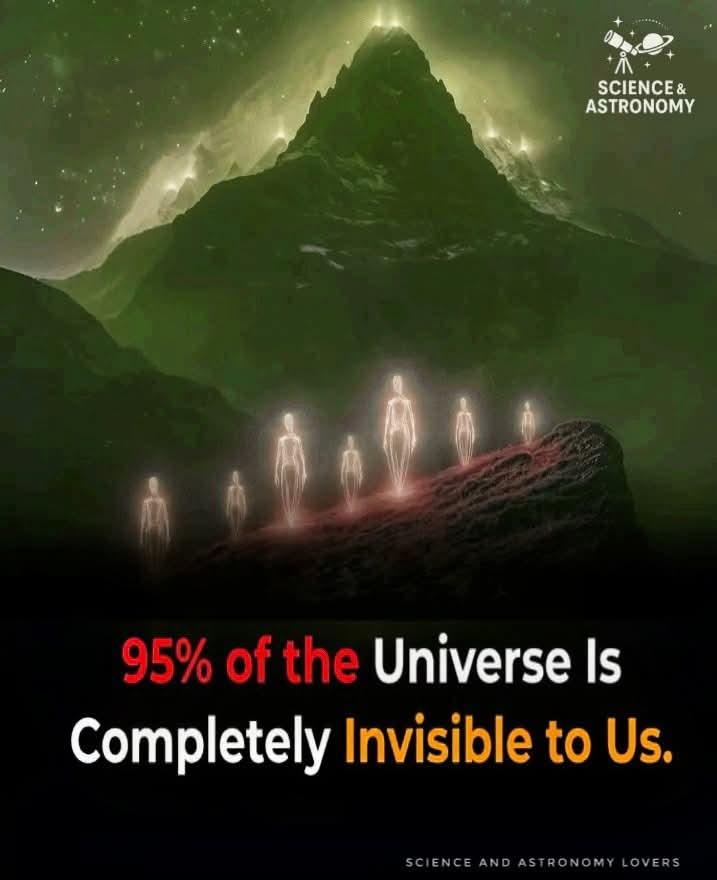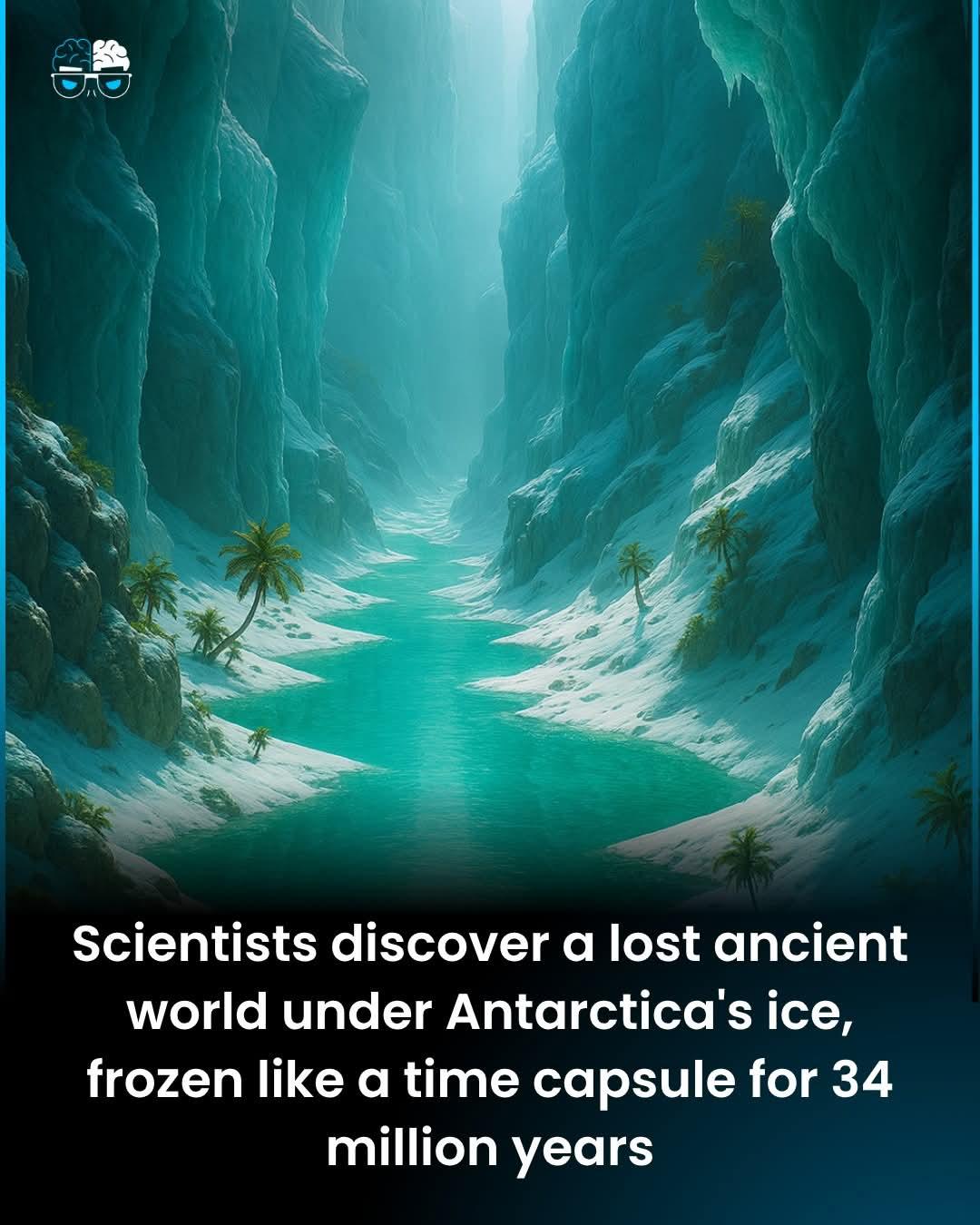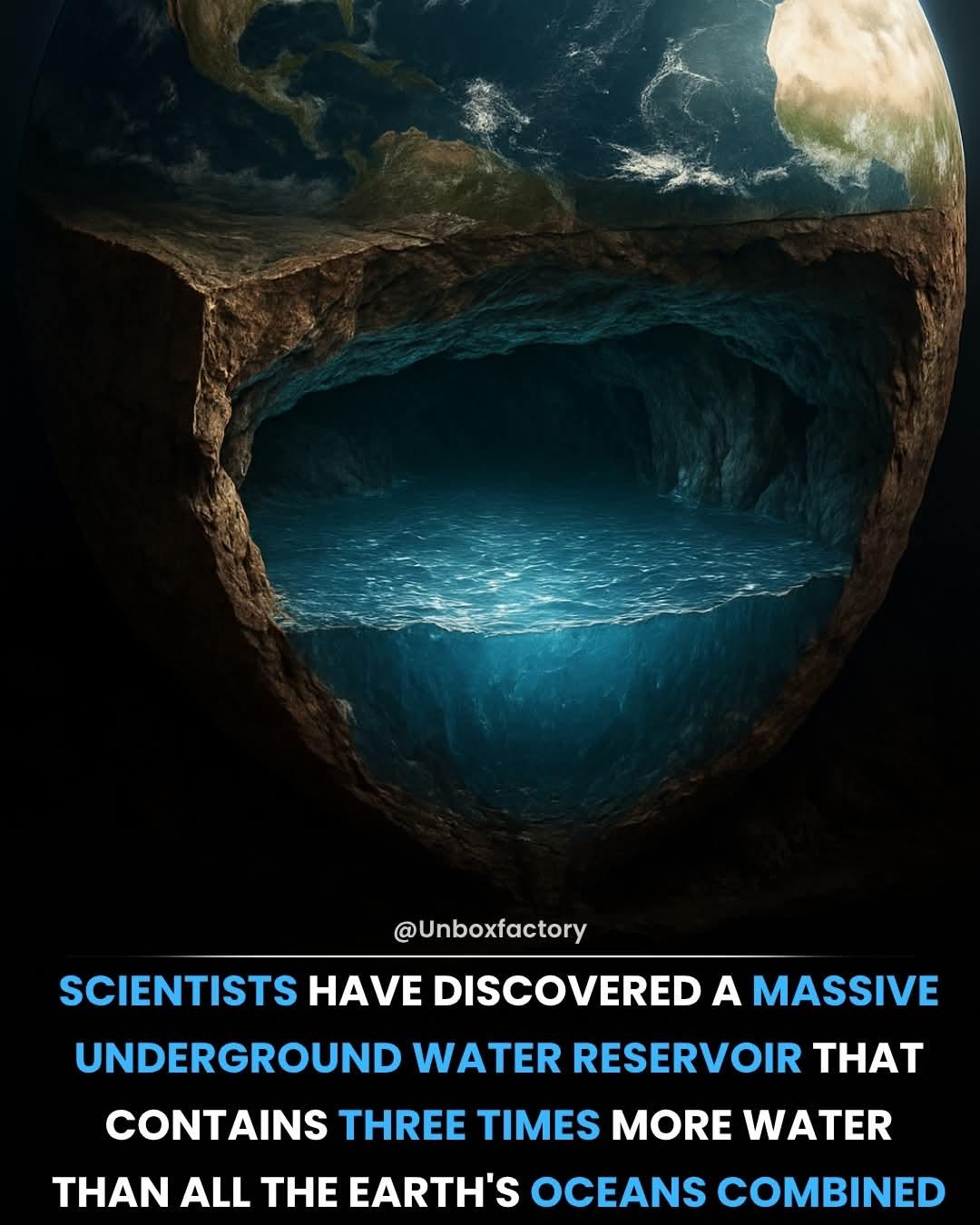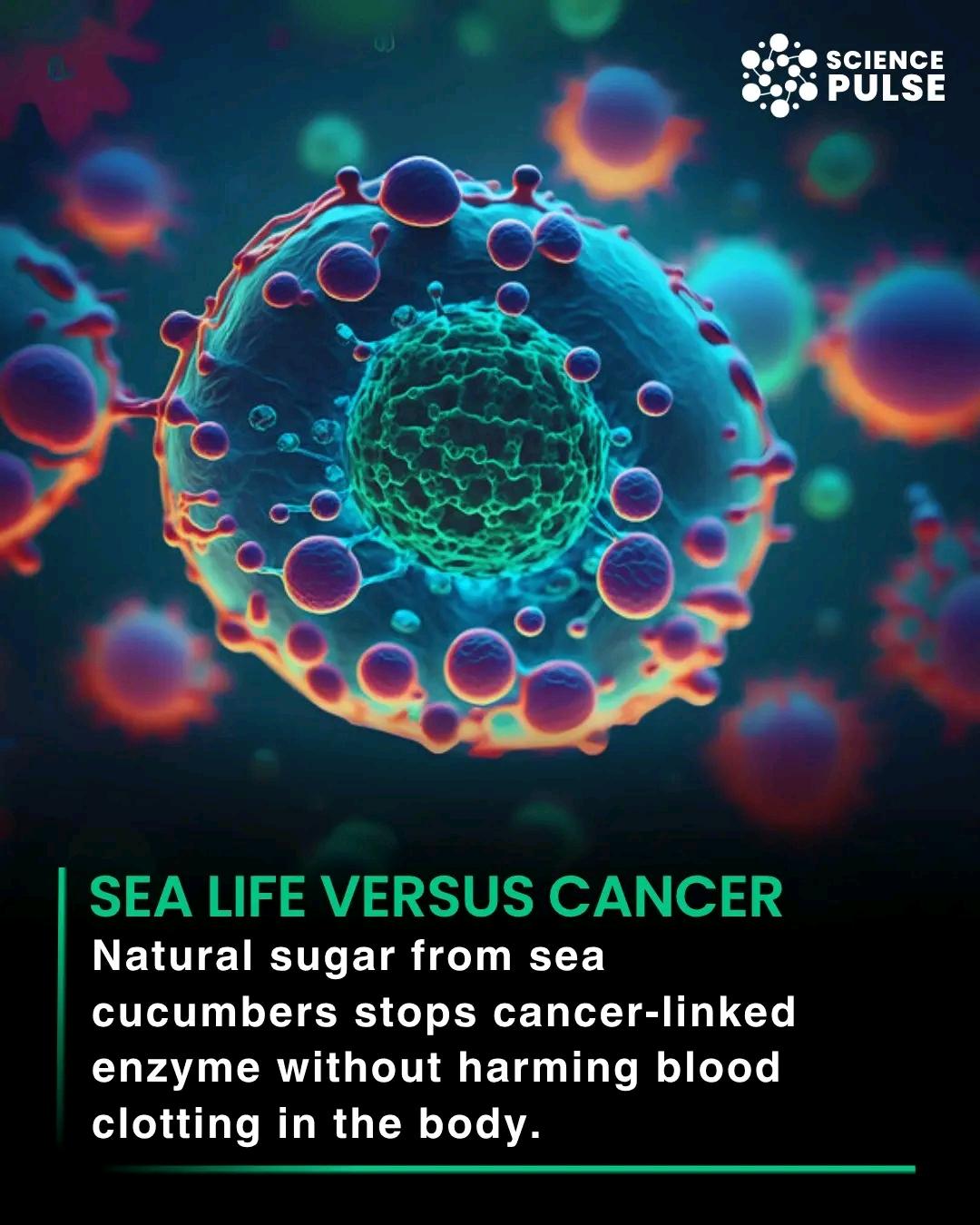1.ℹ️NEWS -এর পূর্ণরূপ North, East, West, South, (নিউজ) নর্থ, ইষ্ট, ওয়েষ্ট, সাউথ
2.ℹ️E-MAIL -এর পূর্ণরূপ Electronic Mail, (ই-মেইল) ইলেকট্রনিক মেইল
3.ℹ️GIF -এর পূর্ণরূপ Graphics interchange format, (গিফ) গ্রাফিক্স ইন্টারচেঞ্জ ফরমেট
4.ℹ️Date -এর পূর্ণরূপ Day and Time Evolution, (ডেট) ডে এন্ড টাইম ইভোলুশন।
5.ℹ️LCD -এর পূর্ণরূপ Liquid crystal display, (এলসিডি) লিকুইড ক্রিস্টাল ডিসপ্লে
6.ℹ️ IT -এর পূর্ণরূপ Information technology, (আইটি) ইনফরমেশন টেকনোলজি
7.ℹ️IP -এর পূর্ণরূপ Internet protocol , (আইপি) ইন্টারনেট প্রোটোকল
8.ℹ️CD -এর পূর্ণরূপ Compact Disk, (সিডি) কম্প্যাক্ট ডিস্ক
9.ℹ️DVD -এর পূর্ণরূপ Digital Video Disk, (ডিভিডি) ডিজিটাল ভিডিও ডিস্ক
10.ℹ️PDF -এর পূর্ণরূপ Portable document format, (পিডিএফ) পোর্টেবল ডকুমেন্ট ফরম্যাট
11.ℹ️OS -এর পূর্ণরূপ Operating System, (ওসি) অপারেটিং সিস্টেম
12.ℹ️ISO -এর পূর্ণরূপ International standards organization(কম্পিউটার ফাইল), International Organization for Standardization(বিশ্ব মার্ক), (আইএসও) ইন্টারন্যাশনাল স্ট্যান্ডার্ডস অর্গানিজশন,
13.ℹ️PC -এর পূর্ণরূপ Personal Computer, (পিসি) পার্সোনাল কম্পিউটার
14.ℹ️CPU -এর পূর্ণরূপ Central Processing Unit, (সিপিইউ) সেন্ট্রাল প্রসেসিং ইউনিট
15.ℹ️RAM -এর পূর্ণরূপ Random Access Memory, (রেম) রান্ডম এক্সেস মেমোরি
16.ℹ️ROM -এর পূর্ণরূপ Read Only Memory, (রোম) রিড অনলি মেমোরি
17.ℹ️BIOS -এর পূর্ণরূপ Basic Input Output System, (বায়োস) বেসিক ইনপুট আউটপুট সিস্টেম
18.ℹ️HDD -এর পূর্ণরূপ Hard Disk Drive, (এইচডিডি) হার্ড ডিস্ক ড্রাইভ
19.ℹ️HTTP এর পূর্ণরূপ — Hyper Text Transfer Protocol.
20.ℹ️HTTPS এর পূর্ণরূপ — Hyper Text Transfer Protocol Secure.
21.ℹ️URL এর পূর্ণরূপ — Uniform Resource Locator.
22.ℹ️VIRUS এর পূর্ণরূপ — Vital Information Resourc Under Seized.
23.ℹ️HTML -এর পূর্ণরূপ Hyper Text Mark Up Language, (এইচটিএমএল) হাইপার টেক্সট মার্ক উপ ল্যাঙ্গুয়েজে
24.ℹ️KB -এর পূর্ণরূপ Kilo Byte, (কেবি) কিলো বাইট
25.ℹ️MB -এর পূর্ণরূপ Mega Byte, (এমবি) মেগা বাইট
26.ℹ️GB -এর পূর্ণরূপ Giga Byte, (জিবি) গিগা বাইট
27.ℹ️TB -এর পূর্ণরূপ Tera Byte ,(টিবি) তেরা বাইট
28.ℹ️FDD -এর পূর্ণরূপ Floppy Disk Drive, (এফডিডি) ফ্লপি ডিস্ক ড্রাইভ
অজয়
29.ℹ️WiMAX -এর পূর্ণরূপ Worldwide Interoperability for Microwave Access
(উইমাক্স) ওয়ার্ল্ডওয়াইড ইন্টেরোপেরাবিলিটি ফর মাইক্রোওয়েভ এক্সেস
30.ℹ️SIM এর পূর্ণরূপ — Subscriber Identity Module.
31. 3G এর পূর্ণরূপ — 3rd Generation.
32.ℹ️GSM এর পূর্ণরূপ — Global System for Mobile Communication.
33.ℹ️CDMA এর পূর্ণরূপ — Code Divison Multiple Access.
34.ℹ️UMTS এর পূর্ণরূপ — Universal Mobile Telecommunication System.
35.ℹ️ICT -এর পূর্ণরূপ Information and Communication Technology , (আইসিটি) ইনফরমেশন এন্ড কমিউনিকেশন টেকনোলজি
36.ℹ️WWW -এর পূর্ণরূপ World Wide Web, (WWW) ওয়ার্ল্ড ওয়াইড ওয়েব
37.ℹ️V.C- এর পূর্ণরূপ — Vice Chancellor, (ভিসি) ভাইস-চ্যাঞ্চেলর
38.ℹ️D.C- এর পূর্ণরূপ— District Commissioner/ Deputy Commissioner,(ডিসি) ডিস্ট্রিক্ট কমিশনার/ ডেপুটি কমিশনার
39.ℹ️A.M - এর পূর্ণরূপ — Ante meridian.
40.ℹ️P.M - এর পূর্ণরূপ — Post meridian.
41.ℹ️GPA,5 - এর পূর্ণরূপ—Grade point Average
42.ℹ️J.S.C - এর পূর্ণরূপ — Junior School Certificate.
43.ℹ️J.D.C - এর পূর্ণরূপ — Junior Dakhil Certificate.
44.ℹ️S.S.C - এর পূর্ণরূপ — Secondary School Certificate.
45.ℹ️H.S.C - এর পূর্ণরূপ — Higher Secondary Certificate.
অজয়
46.ℹ️B. A - এর পূর্ণরূপ — Bachelor of Arts.
47.ℹ️M.A. - এর পূর্ণরূপ — Master of Arts.
48.ℹ️M.D. - এর পূর্ণরূপ — Doctor of Medicine./ Managing director.
49.ℹ️M.S. - এর পূর্ণরূপ — Master of Surgery.
50.ℹ️B.Sc. Ag. - এর পূর্ণরূপ — Bachelor of Science in Agriculture .
51.ℹ️M.Sc.Ag.- এর পূর্ণরূপ — Master of Science in Agriculture.
52.ℹ️B.Sc. - এর পূর্ণরূপ — Bachelor of Science.
53.ℹ️M.Sc. - এর পূর্ণরূপ — Master of Science.
54.ℹ️D.Sc. - এর পূর্ণরূপ — Doctor of Science.
55.ℹ️B.C.O.M - এর পূর্ণরূপ — Bachelor of Commerce.
56.ℹ️M.C.O.M - এর পূর্ণরূপ — Master of Commerce.
57.ℹ️B.ed - এর পূর্ণরূপ — Bachelor of education.
58.ℹ️B.B.S - এর পূর্ণরূপ — Bachelor of Business Studies.
59.ℹ️B.S.S - এর পূর্ণরূপ — Bachelor of Social Science/Study.
60.ℹ️B.B.A - এর পূর্ণরূপ — Bachelor of Business Administration
61.ℹ️M.B.A - এর পূর্ণরূপ — এর পূর্নরূপ — Masters of Business Administration.
62.ℹ️B.C.S - এর পূর্ণরূপ — Bangladesh Civil Service.
অজয়
63.ℹ️M.B.B.S. - এর পূর্ণরূপ — Bachelor of Medicine, Bachelor of Surgery.
64.ℹ️Ph.D./ D.Phil. - এর পূর্ণরূপ — Doctor of Philosophy (Arts & Science)
65.ℹ️D.Litt./Lit. - এর পূর্ণরূপ — Doctor of Literature/ Doctor of Letters.
66.ℹ️Dr. - এর পূর্ণরূপ — Doctor.
67.ℹ️Mr. - এর পূর্ণরূপ — Mister.
68.ℹ️Mrs. - এর পূর্ণরূপ — Mistress.
69.ℹ️M.P. - এর পূর্ণরূপ — Member of Parliament.
70.ℹ️M.L.A. - এর পূর্ণরূপ— Member of Legislative Assembly.
71.ℹ️M.L.C - এর পূর্ণরূপ — Member of Legislative Council.
72.ℹ️P.M. - এর পূর্ণরূপ — Prime Minister.
73.ℹ️V.P - এর পূর্ণরূপ — Vice President./ Vice Principal.
অজয়
74.ℹ️V.C- এর পূর্ণরূপ — Vice Chancellor.
75.ℹ️D.C- এর পূর্ণরূপ— District Commissioner/ Deputy Commissioner.
76.ℹ️S.P- এর পূর্ণরূপ — Superintendent of police
77.ℹ️S.I - এর পূর্ণরূপ — Sub Inspector Police.
78.ℹ️CGPA-এর পূর্নরূপ–Cumulative Grade Point Average
79.ℹ️Wi-Fi র পূর্ণরূপ — Wireless Fidelity.
80.ℹ️RTS এর পূর্ণরূপ — Real Time Streaming
81.ℹ️AVI এর পূর্ণরূপ — Audio Video Interleave
82.ℹ️SIS এর পূর্ণরূপ — Symbian OS Installer File
83.ℹ️AMR এর পূর্ণরূপ — Adaptive Multi-Rate Codec
অজয়
84.ℹ️JAD এর পূর্ণরূপ — Java Application Descriptor
85.ℹ️ JAR এর পূর্ণরূপ — Java Archive
86.ℹ️MP3 এর পূর্ণরূপ — MPEG player lll
87.ℹ️3GPP এর পূর্ণরূপ — 3rd Generation Partnership Project
88.ℹ️3GP এর পূর্ণরূপ — 3rd Generation Project
89.ℹ️AAC এর পূর্ণরূপ — Advanced Audio Coding
90.ℹ️BMP এর পূর্ণরূপ — Bitmap
91.ℹ️JPEG এর পূর্ণরূপ — Joint Photographic Expert Group
92.ℹ️SWF এর পূর্ণরূপ — Shock Wave Flash
93.ℹ️WMV এর পূর্ণরূপ — Windows Media Video
94.ℹ️WMA এর পূর্ণরূপ — Windows Media Audio
95.ℹ️WAV এর পূর্ণরূপ — Waveform Audio
96.ℹ️PNG এর পূর্ণরূপ — Portable Network Graphics
97.ℹ️DOC এর পূর্ণরূপ — Docoment (Microsoft Corporation)
98.ℹ️M3G এর পূর্ণরূপ — Mobile 3D Graphics
99.ℹ️M4A এর পূর্ণরূপ — MPEG-4 Audio File
100.ℹ️NTH এর পূর্ণরূপ — Nokia Theme(series 40)
101.ℹ️THM এর পূর্ণরূপ — Themes (Sony Ericsson)
102.ℹ️MMF এর পূর্ণরূপ — Synthetic Music Mobile Application File
103.ℹ️NRT এর পূর্ণরূপ — Nokia Ringtone
104.ℹ️XMF এর পূর্ণরূপ — Extensible Music File
105.ℹ️WBMP এর পূর্ণরূপ — Wireless Bitmap Image
106.ℹ️DVX এর পূর্ণরূপ — DivX Video
107.ℹ️HTML এর পূর্ণরূপ — Hyper Text Markup Language
108.ℹ️WML এর পূর্ণরূপ — Wireless Markup Language
109.ℹ️CRT — Cathode Ray Tube.
110.ℹ️DAT এর পূর্ণরূপ — Digital Audio Tape.
111.ℹ️DOS এর পূর্ণরূপ — Disk Operating System.
112.ℹ️GUI এর পূর্ণরূপ — Graphical User Interface.
113.ℹ️ISP এর পূর্ণরূপ — Internet Service Provider.
114.ℹ️TCP এর পূর্ণরূপ — Transmission ControlProtocol.
115.ℹ️UPS এর পূর্ণরূপ — Uninterruptible Power Supply.
116.ℹ️HSDPA এর পূর্ণরূপ — High Speed Downlink Packet Access.
117.ℹ️EDGE এর পূর্ণরূপ — Enhanced Data Rate for
118.ℹ️GSM [Global System for Mobile Communication]
119.ℹ️VHF এর পূর্ণরূপ — Very High Frequency.
120.ℹ️UHF এর পূর্ণরূপ — Ultra High Frequency.
121.ℹ️GPRS এর পূর্ণরূপ — General Packet Radio Service.
122.ℹ️WAP এর পূর্ণরূপ — Wireless Application Protocol.
123.ℹ️ARPANET এর পূর্ণরূপ — Advanced Research Project Agency Network.
124.ℹ️IBM এর পূর্ণরূপ — International Business Machines.
125.ℹ️HP এর পূর্ণরূপ — Hewlett Packard.
126.ℹ️AM/FM এর পূর্ণরূপ — Amplitude/ Frequency Modulation.
127.ℹ️WLAN এর পূর্ণরূপ — Wireless Local Area Network
128.ℹ️USB এর পূর্ণরূপ — Universal Serial Bus.
129.ℹ️HD এর পূর্ণরূপ — High Definition
130.ℹ️APK এর পূর্ণরূপ — Android application package.
131.ℹ️BCS এর পূর্ণরূপ — Bangladesh Civil Service
132.ℹ️NCTB এর পূর্ণরূপ — National Curriculam & Text Book
133.ℹ️DPE এর পূর্ণরূপ — Directorate of Primary Education
134.ℹ️MBA এর পূর্ণরূপ — Master of Business Administration
অজয়
135.ℹ️LLB এর পূর্ণরূপ — Bachelor Of Law
136.ℹ️VIP এর পূর্ণরূপ — Very Important Person
137.ℹ️UNICEF এর পূর্ণরূপ — United Nations International Children's Emergency Fund
138.ℹ️OK এর পূর্ণরূপ — All Correct
139.ℹ️এক্সেল — এক্সেল একটি হিসাব রক্ষার কাজে ব্যবহৃত প্রোগ্রাম।
140.ℹ️FBC এর পূর্ণরূপ — Federal bureau corporation
141.ℹ️fb এর পূর্ণরূপ — Foreign body/ Facebook
142.ℹ️ABC এর পূর্ণরূপ — Alphabetically Based Computerized
143.ℹ️DDR এর পূর্ণরূপ — Double data rate
144.ℹ️VAT – এর পূর্নরূপ — Value Added Tax (মুল্য সংযোজন কর)
145.ℹ️XY এর পূর্ণরূপ — Male Chromosome
146.ℹ️XXY এর পূর্ণরূপ — Klinefelter Syndrome chromosomes
147.ℹ️A-Level এর পূর্নরূপ — Advanced Level
148.ℹ️BL এর পূর্নরূপ — Bachelor Of Law
149.ℹ️YAHOO--Yet Another Hierarchical Officious Oracle.
150.ℹ️BTV এর পূর্নরূপ — Bangladesh Television
151.ℹ️LP এর পূর্নরূপ — Long Playing
অজয়
152.ℹ️PIN এর পূর্নরূপ — Postal Index Number
153.ℹ️KG এর পূর্নরূপ — KiloGram / Kindergarten
154.ℹ️Mbps. = Mega bits per second
MB/s. = Mega byte per second
155.ℹ️DJ- এর পূর্নরূপ — Disc jockey
156.ℹ️OTG – এর পূর্নরূপ — On The Go2021 Year
1.ℹ️NEWS -এর পূর্ণরূপ North, East, West, South, (নিউজ) নর্থ, ইষ্ট, ওয়েষ্ট, সাউথ
2.ℹ️E-MAIL -এর পূর্ণরূপ Electronic Mail, (ই-মেইল) ইলেকট্রনিক মেইল
3.ℹ️GIF -এর পূর্ণরূপ Graphics interchange format, (গিফ) গ্রাফিক্স ইন্টারচেঞ্জ ফরমেট
4.ℹ️Date -এর পূর্ণরূপ Day and Time Evolution, (ডেট) ডে এন্ড টাইম ইভোলুশন।
5.ℹ️LCD -এর পূর্ণরূপ Liquid crystal display, (এলসিডি) লিকুইড ক্রিস্টাল ডিসপ্লে
6.ℹ️ IT -এর পূর্ণরূপ Information technology, (আইটি) ইনফরমেশন টেকনোলজি
7.ℹ️IP -এর পূর্ণরূপ Internet protocol , (আইপি) ইন্টারনেট প্রোটোকল
8.ℹ️CD -এর পূর্ণরূপ Compact Disk, (সিডি) কম্প্যাক্ট ডিস্ক
9.ℹ️DVD -এর পূর্ণরূপ Digital Video Disk, (ডিভিডি) ডিজিটাল ভিডিও ডিস্ক
10.ℹ️PDF -এর পূর্ণরূপ Portable document format, (পিডিএফ) পোর্টেবল ডকুমেন্ট ফরম্যাট
11.ℹ️OS -এর পূর্ণরূপ Operating System, (ওসি) অপারেটিং সিস্টেম
12.ℹ️ISO -এর পূর্ণরূপ International standards organization(কম্পিউটার ফাইল), International Organization for Standardization(বিশ্ব মার্ক), (আইএসও) ইন্টারন্যাশনাল স্ট্যান্ডার্ডস অর্গানিজশন,
অজয়
13.ℹ️PC -এর পূর্ণরূপ Personal Computer, (পিসি) পার্সোনাল কম্পিউটার
14.ℹ️CPU -এর পূর্ণরূপ Central Processing Unit, (সিপিইউ) সেন্ট্রাল প্রসেসিং ইউনিট
15.ℹ️RAM -এর পূর্ণরূপ Random Access Memory, (রেম) রান্ডম এক্সেস মেমোরি
16.ℹ️ROM -এর পূর্ণরূপ Read Only Memory, (রোম) রিড অনলি মেমোরি
17.ℹ️BIOS -এর পূর্ণরূপ Basic Input Output System, (বায়োস) বেসিক ইনপুট আউটপুট সিস্টেম
18.ℹ️HDD -এর পূর্ণরূপ Hard Disk Drive, (এইচডিডি) হার্ড ডিস্ক ড্রাইভ
19.ℹ️HTTP এর পূর্ণরূপ — Hyper Text Transfer Protocol.
অজয়
20.ℹ️HTTPS এর পূর্ণরূপ — Hyper Text Transfer Protocol Secure.
21.ℹ️URL এর পূর্ণরূপ — Uniform Resource Locator.
22.ℹ️VIRUS এর পূর্ণরূপ — Vital Information Resourc Under Seized.
23.ℹ️HTML -এর পূর্ণরূপ Hyper Text Mark Up Language, (এইচটিএমএল) হাইপার টেক্সট মার্ক উপ ল্যাঙ্গুয়েজে
24.ℹ️KB -এর পূর্ণরূপ Kilo Byte, (কেবি) কিলো বাইট
25.ℹ️MB -এর পূর্ণরূপ Mega Byte, (এমবি) মেগা বাইট
26.ℹ️GB -এর পূর্ণরূপ Giga Byte, (জিবি) গিগা বাইট
27.ℹ️TB -এর পূর্ণরূপ Tera Byte ,(টিবি) তেরা বাইট
28.ℹ️FDD -এর পূর্ণরূপ Floppy Disk Drive, (এফডিডি) ফ্লপি ডিস্ক ড্রাইভ
অজয়
29.ℹ️WiMAX -এর পূর্ণরূপ Worldwide Interoperability for Microwave Access
(উইমাক্স) ওয়ার্ল্ডওয়াইড ইন্টেরোপেরাবিলিটি ফর মাইক্রোওয়েভ এক্সেস
30.ℹ️SIM এর পূর্ণরূপ — Subscriber Identity Module.
31. 3G এর পূর্ণরূপ — 3rd Generation.
32.ℹ️GSM এর পূর্ণরূপ — Global System for Mobile Communication.
33.ℹ️CDMA এর পূর্ণরূপ — Code Divison Multiple Access.
অজয়
34.ℹ️UMTS এর পূর্ণরূপ — Universal Mobile Telecommunication System.
35.ℹ️ICT -এর পূর্ণরূপ Information and Communication Technology , (আইসিটি) ইনফরমেশন এন্ড কমিউনিকেশন টেকনোলজি
36.ℹ️WWW -এর পূর্ণরূপ World Wide Web, (WWW) ওয়ার্ল্ড ওয়াইড ওয়েব
37.ℹ️V.C- এর পূর্ণরূপ — Vice Chancellor, (ভিসি) ভাইস-চ্যাঞ্চেলর
38.ℹ️D.C- এর পূর্ণরূপ— District Commissioner/ Deputy Commissioner,(ডিসি) ডিস্ট্রিক্ট কমিশনার/ ডেপুটি কমিশনার
39.ℹ️A.M - এর পূর্ণরূপ — Ante meridian.
40.ℹ️P.M - এর পূর্ণরূপ — Post meridian.
41.ℹ️GPA,5 - এর পূর্ণরূপ—Grade point Average
42.ℹ️J.S.C - এর পূর্ণরূপ — Junior School Certificate.
43.ℹ️J.D.C - এর পূর্ণরূপ — Junior Dakhil Certificate.
44.ℹ️S.S.C - এর পূর্ণরূপ — Secondary School Certificate.
অজয়
45.ℹ️H.S.C - এর পূর্ণরূপ — Higher Secondary Certificate.
46.ℹ️B. A - এর পূর্ণরূপ — Bachelor of Arts.
47.ℹ️M.A. - এর পূর্ণরূপ — Master of Arts.
48.ℹ️M.D. - এর পূর্ণরূপ — Doctor of Medicine./ Managing director.
49.ℹ️M.S. - এর পূর্ণরূপ — Master of Surgery.
50.ℹ️B.Sc. Ag. - এর পূর্ণরূপ — Bachelor of Science in Agriculture .
51.ℹ️M.Sc.Ag.- এর পূর্ণরূপ — Master of Science in Agriculture.
অজয়
52.ℹ️B.Sc. - এর পূর্ণরূপ — Bachelor of Science.
53.ℹ️M.Sc. - এর পূর্ণরূপ — Master of Science.
54.ℹ️D.Sc. - এর পূর্ণরূপ — Doctor of Science.
55.ℹ️B.C.O.M - এর পূর্ণরূপ — Bachelor of Commerce.
56.ℹ️M.C.O.M - এর পূর্ণরূপ — Master of Commerce.
57.ℹ️B.ed - এর পূর্ণরূপ — Bachelor of education.
58.ℹ️B.B.S - এর পূর্ণরূপ — Bachelor of Business Studies.
59.ℹ️B.S.S - এর পূর্ণরূপ — Bachelor of Social Science/Study.
60.ℹ️B.B.A - এর পূর্ণরূপ — Bachelor of Business Administration
61.ℹ️M.B.A - এর পূর্ণরূপ — এর পূর্নরূপ — Masters of Business Administration.
62.ℹ️B.C.S - এর পূর্ণরূপ — Bangladesh Civil Service.
63.ℹ️M.B.B.S. - এর পূর্ণরূপ — Bachelor of Medicine, Bachelor of Surgery.
অজয়
64.ℹ️Ph.D./ D.Phil. - এর পূর্ণরূপ — Doctor of Philosophy (Arts & Science)
65.ℹ️D.Litt./Lit. - এর পূর্ণরূপ — Doctor of Literature/ Doctor of Letters.
66.ℹ️Dr. - এর পূর্ণরূপ — Doctor.
67.ℹ️Mr. - এর পূর্ণরূপ — Mister.
68.ℹ️Mrs. - এর পূর্ণরূপ — Mistress.
69.ℹ️M.P. - এর পূর্ণরূপ — Member of Parliament.
70.ℹ️M.L.A. - এর পূর্ণরূপ— Member of Legislative Assembly.
71.ℹ️M.L.C - এর পূর্ণরূপ — Member of Legislative Council.
72.ℹ️P.M. - এর পূর্ণরূপ — Prime Minister.
73.ℹ️V.P - এর পূর্ণরূপ — Vice President./ Vice Principal.
74.ℹ️V.C- এর পূর্ণরূপ — Vice Chancellor.
75.ℹ️D.C- এর পূর্ণরূপ— District Commissioner/ Deputy Commissioner.
অজয়
76.ℹ️S.P- এর পূর্ণরূপ — Superintendent of police
77.ℹ️S.I - এর পূর্ণরূপ — Sub Inspector Police.
78.ℹ️CGPA-এর পূর্নরূপ–Cumulative Grade Point Average
79.ℹ️Wi-Fi র পূর্ণরূপ — Wireless Fidelity.
80.ℹ️RTS এর পূর্ণরূপ — Real Time Streaming
81.ℹ️AVI এর পূর্ণরূপ — Audio Video Interleave
82.ℹ️SIS এর পূর্ণরূপ — Symbian OS Installer File
83.ℹ️AMR এর পূর্ণরূপ — Adaptive Multi-Rate Codec
84.ℹ️JAD এর পূর্ণরূপ — Java Application Descriptor
85.ℹ️ JAR এর পূর্ণরূপ — Java Archive
86.ℹ️MP3 এর পূর্ণরূপ — MPEG player lll
87.ℹ️3GPP এর পূর্ণরূপ — 3rd Generation Partnership Project
88.ℹ️3GP এর পূর্ণরূপ — 3rd Generation Project
89.ℹ️AAC এর পূর্ণরূপ — Advanced Audio Coding
90.ℹ️BMP এর পূর্ণরূপ — Bitmap
91.ℹ️JPEG এর পূর্ণরূপ — Joint Photographic Expert Group
92.ℹ️SWF এর পূর্ণরূপ — Shock Wave Flash
অজয়
93.ℹ️WMV এর পূর্ণরূপ — Windows Media Video
94.ℹ️WMA এর পূর্ণরূপ — Windows Media Audio
95.ℹ️WAV এর পূর্ণরূপ — Waveform Audio
96.ℹ️PNG এর পূর্ণরূপ — Portable Network Graphics
97.ℹ️DOC এর পূর্ণরূপ — Docoment (Microsoft Corporation)
98.ℹ️M3G এর পূর্ণরূপ — Mobile 3D Graphics
99.ℹ️M4A এর পূর্ণরূপ — MPEG-4 Audio File
100.ℹ️NTH এর পূর্ণরূপ — Nokia Theme(series 40)
101.ℹ️THM এর পূর্ণরূপ — Themes (Sony Ericsson)
102.ℹ️MMF এর পূর্ণরূপ — Synthetic Music Mobile Application File
103.ℹ️NRT এর পূর্ণরূপ — Nokia Ringtone
104.ℹ️XMF এর পূর্ণরূপ — Extensible Music File
105.ℹ️WBMP এর পূর্ণরূপ — Wireless Bitmap Image
106.ℹ️DVX এর পূর্ণরূপ — DivX Video
107.ℹ️HTML এর পূর্ণরূপ — Hyper Text Markup Language
108.ℹ️WML এর পূর্ণরূপ — Wireless Markup Language
অজয়
109.ℹ️CRT — Cathode Ray Tube.
110.ℹ️DAT এর পূর্ণরূপ — Digital Audio Tape.
111.ℹ️DOS এর পূর্ণরূপ — Disk Operating System.
112.ℹ️GUI এর পূর্ণরূপ — Graphical User Interface.
113.ℹ️ISP এর পূর্ণরূপ — Internet Service Provider.
114.ℹ️TCP এর পূর্ণরূপ — Transmission ControlProtocol.
115.ℹ️UPS এর পূর্ণরূপ — Uninterruptible Power Supply.
116.ℹ️HSDPA এর পূর্ণরূপ — High Speed Downlink Packet Access.
117.ℹ️EDGE এর পূর্ণরূপ — Enhanced Data Rate for
118.ℹ️GSM [Global System for Mobile Communication]
119.ℹ️VHF এর পূর্ণরূপ — Very High Frequency.
120.ℹ️UHF এর পূর্ণরূপ — Ultra High Frequency.
121.ℹ️GPRS এর পূর্ণরূপ — General Packet Radio Service.
122.ℹ️WAP এর পূর্ণরূপ — Wireless Application Protocol.
123.ℹ️ARPANET এর পূর্ণরূপ — Advanced Research Project Agency Network.
124.ℹ️IBM এর পূর্ণরূপ — International Business Machines.
125.ℹ️HP এর পূর্ণরূপ — Hewlett Packard.
126.ℹ️AM/FM এর পূর্ণরূপ — Amplitude/ Frequency Modulation.
127.ℹ️WLAN এর পূর্ণরূপ — Wireless Local Area Network
অজয়
128.ℹ️USB এর পূর্ণরূপ — Universal Serial Bus.
129.ℹ️HD এর পূর্ণরূপ — High Definition
130.ℹ️APK এর পূর্ণরূপ — Android application package.
131.ℹ️BCS এর পূর্ণরূপ — Bangladesh Civil Service
132.ℹ️NCTB এর পূর্ণরূপ — National Curriculam & Text Book
133.ℹ️DPE এর পূর্ণরূপ — Directorate of Primary Education
134.ℹ️MBA এর পূর্ণরূপ — Master of Business Administration
135.ℹ️LLB এর পূর্ণরূপ — Bachelor Of Law
136.ℹ️VIP এর পূর্ণরূপ — Very Important Person
137.ℹ️UNICEF এর পূর্ণরূপ — United Nations International Children's Emergency Fund
138.ℹ️OK এর পূর্ণরূপ — All Correct
139.ℹ️এক্সেল — এক্সেল একটি হিসাব রক্ষার কাজে ব্যবহৃত প্রোগ্রাম।
140.ℹ️FBC এর পূর্ণরূপ — Federal bureau corporation
অজয়
141.ℹ️fb এর পূর্ণরূপ — Foreign body/ Facebook
142.ℹ️ABC এর পূর্ণরূপ — Alphabetically Based Computerized
143.ℹ️DDR এর পূর্ণরূপ — Double data rate
144.ℹ️VAT – এর পূর্নরূপ — Value Added Tax (মুল্য সংযোজন কর)
145.ℹ️XY এর পূর্ণরূপ — Male Chromosome
146.ℹ️XXY এর পূর্ণরূপ — Klinefelter Syndrome chromosomes
147.ℹ️A-Level এর পূর্নরূপ — Advanced Level
148.ℹ️BL এর পূর্নরূপ — Bachelor Of Law
149.ℹ️YAHOO--Yet Another Hierarchical Officious Oracle.
150.ℹ️BTV এর পূর্নরূপ — Bangladesh Television
151.ℹ️LP এর পূর্নরূপ — Long Playing
152.ℹ️PIN এর পূর্নরূপ — Postal Index Number
153.ℹ️KG এর পূর্নরূপ — KiloGram / Kindergarten
154.ℹ️Mbps. = Mega bits per second
MB/s. = Mega byte per second
155.ℹ️DJ- এর পূর্নরূপ — Disc jockey
156.ℹ️OTG – এর পূর্নরূপ — On The Go
-
Follow sikkhabarta educational post
1.ℹ️NEWS -এর পূর্ণরূপ North, East, West, South, (নিউজ) নর্থ, ইষ্ট, ওয়েষ্ট, সাউথ
2.ℹ️E-MAIL -এর পূর্ণরূপ Electronic Mail, (ই-মেইল) ইলেকট্রনিক মেইল
3.ℹ️GIF -এর পূর্ণরূপ Graphics interchange format, (গিফ) গ্রাফিক্স ইন্টারচেঞ্জ ফরমেট
4.ℹ️Date -এর পূর্ণরূপ Day and Time Evolution, (ডেট) ডে এন্ড টাইম ইভোলুশন।
5.ℹ️LCD -এর পূর্ণরূপ Liquid crystal display, (এলসিডি) লিকুইড ক্রিস্টাল ডিসপ্লে
6.ℹ️ IT -এর পূর্ণরূপ Information technology, (আইটি) ইনফরমেশন টেকনোলজি
7.ℹ️IP -এর পূর্ণরূপ Internet protocol , (আইপি) ইন্টারনেট প্রোটোকল
8.ℹ️CD -এর পূর্ণরূপ Compact Disk, (সিডি) কম্প্যাক্ট ডিস্ক
9.ℹ️DVD -এর পূর্ণরূপ Digital Video Disk, (ডিভিডি) ডিজিটাল ভিডিও ডিস্ক
10.ℹ️PDF -এর পূর্ণরূপ Portable document format, (পিডিএফ) পোর্টেবল ডকুমেন্ট ফরম্যাট
11.ℹ️OS -এর পূর্ণরূপ Operating System, (ওসি) অপারেটিং সিস্টেম
12.ℹ️ISO -এর পূর্ণরূপ International standards organization(কম্পিউটার ফাইল), International Organization for Standardization(বিশ্ব মার্ক), (আইএসও) ইন্টারন্যাশনাল স্ট্যান্ডার্ডস অর্গানিজশন,
13.ℹ️PC -এর পূর্ণরূপ Personal Computer, (পিসি) পার্সোনাল কম্পিউটার
14.ℹ️CPU -এর পূর্ণরূপ Central Processing Unit, (সিপিইউ) সেন্ট্রাল প্রসেসিং ইউনিট
15.ℹ️RAM -এর পূর্ণরূপ Random Access Memory, (রেম) রান্ডম এক্সেস মেমোরি
16.ℹ️ROM -এর পূর্ণরূপ Read Only Memory, (রোম) রিড অনলি মেমোরি
17.ℹ️BIOS -এর পূর্ণরূপ Basic Input Output System, (বায়োস) বেসিক ইনপুট আউটপুট সিস্টেম
18.ℹ️HDD -এর পূর্ণরূপ Hard Disk Drive, (এইচডিডি) হার্ড ডিস্ক ড্রাইভ
19.ℹ️HTTP এর পূর্ণরূপ — Hyper Text Transfer Protocol.
20.ℹ️HTTPS এর পূর্ণরূপ — Hyper Text Transfer Protocol Secure.
21.ℹ️URL এর পূর্ণরূপ — Uniform Resource Locator.
22.ℹ️VIRUS এর পূর্ণরূপ — Vital Information Resourc Under Seized.
23.ℹ️HTML -এর পূর্ণরূপ Hyper Text Mark Up Language, (এইচটিএমএল) হাইপার টেক্সট মার্ক উপ ল্যাঙ্গুয়েজে
24.ℹ️KB -এর পূর্ণরূপ Kilo Byte, (কেবি) কিলো বাইট
25.ℹ️MB -এর পূর্ণরূপ Mega Byte, (এমবি) মেগা বাইট
26.ℹ️GB -এর পূর্ণরূপ Giga Byte, (জিবি) গিগা বাইট
27.ℹ️TB -এর পূর্ণরূপ Tera Byte ,(টিবি) তেরা বাইট
28.ℹ️FDD -এর পূর্ণরূপ Floppy Disk Drive, (এফডিডি) ফ্লপি ডিস্ক ড্রাইভ
অজয়
29.ℹ️WiMAX -এর পূর্ণরূপ Worldwide Interoperability for Microwave Access
(উইমাক্স) ওয়ার্ল্ডওয়াইড ইন্টেরোপেরাবিলিটি ফর মাইক্রোওয়েভ এক্সেস
30.ℹ️SIM এর পূর্ণরূপ — Subscriber Identity Module.
31. 3G এর পূর্ণরূপ — 3rd Generation.
32.ℹ️GSM এর পূর্ণরূপ — Global System for Mobile Communication.
33.ℹ️CDMA এর পূর্ণরূপ — Code Divison Multiple Access.
34.ℹ️UMTS এর পূর্ণরূপ — Universal Mobile Telecommunication System.
35.ℹ️ICT -এর পূর্ণরূপ Information and Communication Technology , (আইসিটি) ইনফরমেশন এন্ড কমিউনিকেশন টেকনোলজি
36.ℹ️WWW -এর পূর্ণরূপ World Wide Web, (WWW) ওয়ার্ল্ড ওয়াইড ওয়েব
37.ℹ️V.C- এর পূর্ণরূপ — Vice Chancellor, (ভিসি) ভাইস-চ্যাঞ্চেলর
38.ℹ️D.C- এর পূর্ণরূপ— District Commissioner/ Deputy Commissioner,(ডিসি) ডিস্ট্রিক্ট কমিশনার/ ডেপুটি কমিশনার
39.ℹ️A.M - এর পূর্ণরূপ — Ante meridian.
40.ℹ️P.M - এর পূর্ণরূপ — Post meridian.
41.ℹ️GPA,5 - এর পূর্ণরূপ—Grade point Average
42.ℹ️J.S.C - এর পূর্ণরূপ — Junior School Certificate.
43.ℹ️J.D.C - এর পূর্ণরূপ — Junior Dakhil Certificate.
44.ℹ️S.S.C - এর পূর্ণরূপ — Secondary School Certificate.
45.ℹ️H.S.C - এর পূর্ণরূপ — Higher Secondary Certificate.
অজয়
46.ℹ️B. A - এর পূর্ণরূপ — Bachelor of Arts.
47.ℹ️M.A. - এর পূর্ণরূপ — Master of Arts.
48.ℹ️M.D. - এর পূর্ণরূপ — Doctor of Medicine./ Managing director.
49.ℹ️M.S. - এর পূর্ণরূপ — Master of Surgery.
50.ℹ️B.Sc. Ag. - এর পূর্ণরূপ — Bachelor of Science in Agriculture .
51.ℹ️M.Sc.Ag.- এর পূর্ণরূপ — Master of Science in Agriculture.
52.ℹ️B.Sc. - এর পূর্ণরূপ — Bachelor of Science.
53.ℹ️M.Sc. - এর পূর্ণরূপ — Master of Science.
54.ℹ️D.Sc. - এর পূর্ণরূপ — Doctor of Science.
55.ℹ️B.C.O.M - এর পূর্ণরূপ — Bachelor of Commerce.
56.ℹ️M.C.O.M - এর পূর্ণরূপ — Master of Commerce.
57.ℹ️B.ed - এর পূর্ণরূপ — Bachelor of education.
58.ℹ️B.B.S - এর পূর্ণরূপ — Bachelor of Business Studies.
59.ℹ️B.S.S - এর পূর্ণরূপ — Bachelor of Social Science/Study.
60.ℹ️B.B.A - এর পূর্ণরূপ — Bachelor of Business Administration
61.ℹ️M.B.A - এর পূর্ণরূপ — এর পূর্নরূপ — Masters of Business Administration.
62.ℹ️B.C.S - এর পূর্ণরূপ — Bangladesh Civil Service.
অজয়
63.ℹ️M.B.B.S. - এর পূর্ণরূপ — Bachelor of Medicine, Bachelor of Surgery.
64.ℹ️Ph.D./ D.Phil. - এর পূর্ণরূপ — Doctor of Philosophy (Arts & Science)
65.ℹ️D.Litt./Lit. - এর পূর্ণরূপ — Doctor of Literature/ Doctor of Letters.
66.ℹ️Dr. - এর পূর্ণরূপ — Doctor.
67.ℹ️Mr. - এর পূর্ণরূপ — Mister.
68.ℹ️Mrs. - এর পূর্ণরূপ — Mistress.
69.ℹ️M.P. - এর পূর্ণরূপ — Member of Parliament.
70.ℹ️M.L.A. - এর পূর্ণরূপ— Member of Legislative Assembly.
71.ℹ️M.L.C - এর পূর্ণরূপ — Member of Legislative Council.
72.ℹ️P.M. - এর পূর্ণরূপ — Prime Minister.
73.ℹ️V.P - এর পূর্ণরূপ — Vice President./ Vice Principal.
অজয়
74.ℹ️V.C- এর পূর্ণরূপ — Vice Chancellor.
75.ℹ️D.C- এর পূর্ণরূপ— District Commissioner/ Deputy Commissioner.
76.ℹ️S.P- এর পূর্ণরূপ — Superintendent of police
77.ℹ️S.I - এর পূর্ণরূপ — Sub Inspector Police.
78.ℹ️CGPA-এর পূর্নরূপ–Cumulative Grade Point Average
79.ℹ️Wi-Fi র পূর্ণরূপ — Wireless Fidelity.
80.ℹ️RTS এর পূর্ণরূপ — Real Time Streaming
81.ℹ️AVI এর পূর্ণরূপ — Audio Video Interleave
82.ℹ️SIS এর পূর্ণরূপ — Symbian OS Installer File
83.ℹ️AMR এর পূর্ণরূপ — Adaptive Multi-Rate Codec
অজয়
84.ℹ️JAD এর পূর্ণরূপ — Java Application Descriptor
85.ℹ️ JAR এর পূর্ণরূপ — Java Archive
86.ℹ️MP3 এর পূর্ণরূপ — MPEG player lll
87.ℹ️3GPP এর পূর্ণরূপ — 3rd Generation Partnership Project
88.ℹ️3GP এর পূর্ণরূপ — 3rd Generation Project
89.ℹ️AAC এর পূর্ণরূপ — Advanced Audio Coding
90.ℹ️BMP এর পূর্ণরূপ — Bitmap
91.ℹ️JPEG এর পূর্ণরূপ — Joint Photographic Expert Group
92.ℹ️SWF এর পূর্ণরূপ — Shock Wave Flash
93.ℹ️WMV এর পূর্ণরূপ — Windows Media Video
94.ℹ️WMA এর পূর্ণরূপ — Windows Media Audio
95.ℹ️WAV এর পূর্ণরূপ — Waveform Audio
96.ℹ️PNG এর পূর্ণরূপ — Portable Network Graphics
97.ℹ️DOC এর পূর্ণরূপ — Docoment (Microsoft Corporation)
98.ℹ️M3G এর পূর্ণরূপ — Mobile 3D Graphics
99.ℹ️M4A এর পূর্ণরূপ — MPEG-4 Audio File
100.ℹ️NTH এর পূর্ণরূপ — Nokia Theme(series 40)
101.ℹ️THM এর পূর্ণরূপ — Themes (Sony Ericsson)
102.ℹ️MMF এর পূর্ণরূপ — Synthetic Music Mobile Application File
103.ℹ️NRT এর পূর্ণরূপ — Nokia Ringtone
104.ℹ️XMF এর পূর্ণরূপ — Extensible Music File
105.ℹ️WBMP এর পূর্ণরূপ — Wireless Bitmap Image
106.ℹ️DVX এর পূর্ণরূপ — DivX Video
107.ℹ️HTML এর পূর্ণরূপ — Hyper Text Markup Language
108.ℹ️WML এর পূর্ণরূপ — Wireless Markup Language
109.ℹ️CRT — Cathode Ray Tube.
110.ℹ️DAT এর পূর্ণরূপ — Digital Audio Tape.
111.ℹ️DOS এর পূর্ণরূপ — Disk Operating System.
112.ℹ️GUI এর পূর্ণরূপ — Graphical User Interface.
113.ℹ️ISP এর পূর্ণরূপ — Internet Service Provider.
114.ℹ️TCP এর পূর্ণরূপ — Transmission ControlProtocol.
115.ℹ️UPS এর পূর্ণরূপ — Uninterruptible Power Supply.
116.ℹ️HSDPA এর পূর্ণরূপ — High Speed Downlink Packet Access.
117.ℹ️EDGE এর পূর্ণরূপ — Enhanced Data Rate for
118.ℹ️GSM [Global System for Mobile Communication]
119.ℹ️VHF এর পূর্ণরূপ — Very High Frequency.
120.ℹ️UHF এর পূর্ণরূপ — Ultra High Frequency.
121.ℹ️GPRS এর পূর্ণরূপ — General Packet Radio Service.
122.ℹ️WAP এর পূর্ণরূপ — Wireless Application Protocol.
123.ℹ️ARPANET এর পূর্ণরূপ — Advanced Research Project Agency Network.
124.ℹ️IBM এর পূর্ণরূপ — International Business Machines.
125.ℹ️HP এর পূর্ণরূপ — Hewlett Packard.
126.ℹ️AM/FM এর পূর্ণরূপ — Amplitude/ Frequency Modulation.
127.ℹ️WLAN এর পূর্ণরূপ — Wireless Local Area Network
128.ℹ️USB এর পূর্ণরূপ — Universal Serial Bus.
129.ℹ️HD এর পূর্ণরূপ — High Definition
130.ℹ️APK এর পূর্ণরূপ — Android application package.
131.ℹ️BCS এর পূর্ণরূপ — Bangladesh Civil Service
132.ℹ️NCTB এর পূর্ণরূপ — National Curriculam & Text Book
133.ℹ️DPE এর পূর্ণরূপ — Directorate of Primary Education
134.ℹ️MBA এর পূর্ণরূপ — Master of Business Administration
অজয়
135.ℹ️LLB এর পূর্ণরূপ — Bachelor Of Law
136.ℹ️VIP এর পূর্ণরূপ — Very Important Person
137.ℹ️UNICEF এর পূর্ণরূপ — United Nations International Children's Emergency Fund
138.ℹ️OK এর পূর্ণরূপ — All Correct
139.ℹ️এক্সেল — এক্সেল একটি হিসাব রক্ষার কাজে ব্যবহৃত প্রোগ্রাম।
140.ℹ️FBC এর পূর্ণরূপ — Federal bureau corporation
141.ℹ️fb এর পূর্ণরূপ — Foreign body/ Facebook
142.ℹ️ABC এর পূর্ণরূপ — Alphabetically Based Computerized
143.ℹ️DDR এর পূর্ণরূপ — Double data rate
144.ℹ️VAT – এর পূর্নরূপ — Value Added Tax (মুল্য সংযোজন কর)
145.ℹ️XY এর পূর্ণরূপ — Male Chromosome
146.ℹ️XXY এর পূর্ণরূপ — Klinefelter Syndrome chromosomes
147.ℹ️A-Level এর পূর্নরূপ — Advanced Level
148.ℹ️BL এর পূর্নরূপ — Bachelor Of Law
149.ℹ️YAHOO--Yet Another Hierarchical Officious Oracle.
150.ℹ️BTV এর পূর্নরূপ — Bangladesh Television
151.ℹ️LP এর পূর্নরূপ — Long Playing
অজয়
152.ℹ️PIN এর পূর্নরূপ — Postal Index Number
153.ℹ️KG এর পূর্নরূপ — KiloGram / Kindergarten
154.ℹ️Mbps. = Mega bits per second
MB/s. = Mega byte per second
155.ℹ️DJ- এর পূর্নরূপ — Disc jockey
156.ℹ️OTG – এর পূর্নরূপ — On The Go2021 Year
1.ℹ️NEWS -এর পূর্ণরূপ North, East, West, South, (নিউজ) নর্থ, ইষ্ট, ওয়েষ্ট, সাউথ
2.ℹ️E-MAIL -এর পূর্ণরূপ Electronic Mail, (ই-মেইল) ইলেকট্রনিক মেইল
3.ℹ️GIF -এর পূর্ণরূপ Graphics interchange format, (গিফ) গ্রাফিক্স ইন্টারচেঞ্জ ফরমেট
4.ℹ️Date -এর পূর্ণরূপ Day and Time Evolution, (ডেট) ডে এন্ড টাইম ইভোলুশন।
5.ℹ️LCD -এর পূর্ণরূপ Liquid crystal display, (এলসিডি) লিকুইড ক্রিস্টাল ডিসপ্লে
6.ℹ️ IT -এর পূর্ণরূপ Information technology, (আইটি) ইনফরমেশন টেকনোলজি
7.ℹ️IP -এর পূর্ণরূপ Internet protocol , (আইপি) ইন্টারনেট প্রোটোকল
8.ℹ️CD -এর পূর্ণরূপ Compact Disk, (সিডি) কম্প্যাক্ট ডিস্ক
9.ℹ️DVD -এর পূর্ণরূপ Digital Video Disk, (ডিভিডি) ডিজিটাল ভিডিও ডিস্ক
10.ℹ️PDF -এর পূর্ণরূপ Portable document format, (পিডিএফ) পোর্টেবল ডকুমেন্ট ফরম্যাট
11.ℹ️OS -এর পূর্ণরূপ Operating System, (ওসি) অপারেটিং সিস্টেম
12.ℹ️ISO -এর পূর্ণরূপ International standards organization(কম্পিউটার ফাইল), International Organization for Standardization(বিশ্ব মার্ক), (আইএসও) ইন্টারন্যাশনাল স্ট্যান্ডার্ডস অর্গানিজশন,
অজয়
13.ℹ️PC -এর পূর্ণরূপ Personal Computer, (পিসি) পার্সোনাল কম্পিউটার
14.ℹ️CPU -এর পূর্ণরূপ Central Processing Unit, (সিপিইউ) সেন্ট্রাল প্রসেসিং ইউনিট
15.ℹ️RAM -এর পূর্ণরূপ Random Access Memory, (রেম) রান্ডম এক্সেস মেমোরি
16.ℹ️ROM -এর পূর্ণরূপ Read Only Memory, (রোম) রিড অনলি মেমোরি
17.ℹ️BIOS -এর পূর্ণরূপ Basic Input Output System, (বায়োস) বেসিক ইনপুট আউটপুট সিস্টেম
18.ℹ️HDD -এর পূর্ণরূপ Hard Disk Drive, (এইচডিডি) হার্ড ডিস্ক ড্রাইভ
19.ℹ️HTTP এর পূর্ণরূপ — Hyper Text Transfer Protocol.
অজয়
20.ℹ️HTTPS এর পূর্ণরূপ — Hyper Text Transfer Protocol Secure.
21.ℹ️URL এর পূর্ণরূপ — Uniform Resource Locator.
22.ℹ️VIRUS এর পূর্ণরূপ — Vital Information Resourc Under Seized.
23.ℹ️HTML -এর পূর্ণরূপ Hyper Text Mark Up Language, (এইচটিএমএল) হাইপার টেক্সট মার্ক উপ ল্যাঙ্গুয়েজে
24.ℹ️KB -এর পূর্ণরূপ Kilo Byte, (কেবি) কিলো বাইট
25.ℹ️MB -এর পূর্ণরূপ Mega Byte, (এমবি) মেগা বাইট
26.ℹ️GB -এর পূর্ণরূপ Giga Byte, (জিবি) গিগা বাইট
27.ℹ️TB -এর পূর্ণরূপ Tera Byte ,(টিবি) তেরা বাইট
28.ℹ️FDD -এর পূর্ণরূপ Floppy Disk Drive, (এফডিডি) ফ্লপি ডিস্ক ড্রাইভ
অজয়
29.ℹ️WiMAX -এর পূর্ণরূপ Worldwide Interoperability for Microwave Access
(উইমাক্স) ওয়ার্ল্ডওয়াইড ইন্টেরোপেরাবিলিটি ফর মাইক্রোওয়েভ এক্সেস
30.ℹ️SIM এর পূর্ণরূপ — Subscriber Identity Module.
31. 3G এর পূর্ণরূপ — 3rd Generation.
32.ℹ️GSM এর পূর্ণরূপ — Global System for Mobile Communication.
33.ℹ️CDMA এর পূর্ণরূপ — Code Divison Multiple Access.
অজয়
34.ℹ️UMTS এর পূর্ণরূপ — Universal Mobile Telecommunication System.
35.ℹ️ICT -এর পূর্ণরূপ Information and Communication Technology , (আইসিটি) ইনফরমেশন এন্ড কমিউনিকেশন টেকনোলজি
36.ℹ️WWW -এর পূর্ণরূপ World Wide Web, (WWW) ওয়ার্ল্ড ওয়াইড ওয়েব
37.ℹ️V.C- এর পূর্ণরূপ — Vice Chancellor, (ভিসি) ভাইস-চ্যাঞ্চেলর
38.ℹ️D.C- এর পূর্ণরূপ— District Commissioner/ Deputy Commissioner,(ডিসি) ডিস্ট্রিক্ট কমিশনার/ ডেপুটি কমিশনার
39.ℹ️A.M - এর পূর্ণরূপ — Ante meridian.
40.ℹ️P.M - এর পূর্ণরূপ — Post meridian.
41.ℹ️GPA,5 - এর পূর্ণরূপ—Grade point Average
42.ℹ️J.S.C - এর পূর্ণরূপ — Junior School Certificate.
43.ℹ️J.D.C - এর পূর্ণরূপ — Junior Dakhil Certificate.
44.ℹ️S.S.C - এর পূর্ণরূপ — Secondary School Certificate.
অজয়
45.ℹ️H.S.C - এর পূর্ণরূপ — Higher Secondary Certificate.
46.ℹ️B. A - এর পূর্ণরূপ — Bachelor of Arts.
47.ℹ️M.A. - এর পূর্ণরূপ — Master of Arts.
48.ℹ️M.D. - এর পূর্ণরূপ — Doctor of Medicine./ Managing director.
49.ℹ️M.S. - এর পূর্ণরূপ — Master of Surgery.
50.ℹ️B.Sc. Ag. - এর পূর্ণরূপ — Bachelor of Science in Agriculture .
51.ℹ️M.Sc.Ag.- এর পূর্ণরূপ — Master of Science in Agriculture.
অজয়
52.ℹ️B.Sc. - এর পূর্ণরূপ — Bachelor of Science.
53.ℹ️M.Sc. - এর পূর্ণরূপ — Master of Science.
54.ℹ️D.Sc. - এর পূর্ণরূপ — Doctor of Science.
55.ℹ️B.C.O.M - এর পূর্ণরূপ — Bachelor of Commerce.
56.ℹ️M.C.O.M - এর পূর্ণরূপ — Master of Commerce.
57.ℹ️B.ed - এর পূর্ণরূপ — Bachelor of education.
58.ℹ️B.B.S - এর পূর্ণরূপ — Bachelor of Business Studies.
59.ℹ️B.S.S - এর পূর্ণরূপ — Bachelor of Social Science/Study.
60.ℹ️B.B.A - এর পূর্ণরূপ — Bachelor of Business Administration
61.ℹ️M.B.A - এর পূর্ণরূপ — এর পূর্নরূপ — Masters of Business Administration.
62.ℹ️B.C.S - এর পূর্ণরূপ — Bangladesh Civil Service.
63.ℹ️M.B.B.S. - এর পূর্ণরূপ — Bachelor of Medicine, Bachelor of Surgery.
অজয়
64.ℹ️Ph.D./ D.Phil. - এর পূর্ণরূপ — Doctor of Philosophy (Arts & Science)
65.ℹ️D.Litt./Lit. - এর পূর্ণরূপ — Doctor of Literature/ Doctor of Letters.
66.ℹ️Dr. - এর পূর্ণরূপ — Doctor.
67.ℹ️Mr. - এর পূর্ণরূপ — Mister.
68.ℹ️Mrs. - এর পূর্ণরূপ — Mistress.
69.ℹ️M.P. - এর পূর্ণরূপ — Member of Parliament.
70.ℹ️M.L.A. - এর পূর্ণরূপ— Member of Legislative Assembly.
71.ℹ️M.L.C - এর পূর্ণরূপ — Member of Legislative Council.
72.ℹ️P.M. - এর পূর্ণরূপ — Prime Minister.
73.ℹ️V.P - এর পূর্ণরূপ — Vice President./ Vice Principal.
74.ℹ️V.C- এর পূর্ণরূপ — Vice Chancellor.
75.ℹ️D.C- এর পূর্ণরূপ— District Commissioner/ Deputy Commissioner.
অজয়
76.ℹ️S.P- এর পূর্ণরূপ — Superintendent of police
77.ℹ️S.I - এর পূর্ণরূপ — Sub Inspector Police.
78.ℹ️CGPA-এর পূর্নরূপ–Cumulative Grade Point Average
79.ℹ️Wi-Fi র পূর্ণরূপ — Wireless Fidelity.
80.ℹ️RTS এর পূর্ণরূপ — Real Time Streaming
81.ℹ️AVI এর পূর্ণরূপ — Audio Video Interleave
82.ℹ️SIS এর পূর্ণরূপ — Symbian OS Installer File
83.ℹ️AMR এর পূর্ণরূপ — Adaptive Multi-Rate Codec
84.ℹ️JAD এর পূর্ণরূপ — Java Application Descriptor
85.ℹ️ JAR এর পূর্ণরূপ — Java Archive
86.ℹ️MP3 এর পূর্ণরূপ — MPEG player lll
87.ℹ️3GPP এর পূর্ণরূপ — 3rd Generation Partnership Project
88.ℹ️3GP এর পূর্ণরূপ — 3rd Generation Project
89.ℹ️AAC এর পূর্ণরূপ — Advanced Audio Coding
90.ℹ️BMP এর পূর্ণরূপ — Bitmap
91.ℹ️JPEG এর পূর্ণরূপ — Joint Photographic Expert Group
92.ℹ️SWF এর পূর্ণরূপ — Shock Wave Flash
অজয়
93.ℹ️WMV এর পূর্ণরূপ — Windows Media Video
94.ℹ️WMA এর পূর্ণরূপ — Windows Media Audio
95.ℹ️WAV এর পূর্ণরূপ — Waveform Audio
96.ℹ️PNG এর পূর্ণরূপ — Portable Network Graphics
97.ℹ️DOC এর পূর্ণরূপ — Docoment (Microsoft Corporation)
98.ℹ️M3G এর পূর্ণরূপ — Mobile 3D Graphics
99.ℹ️M4A এর পূর্ণরূপ — MPEG-4 Audio File
100.ℹ️NTH এর পূর্ণরূপ — Nokia Theme(series 40)
101.ℹ️THM এর পূর্ণরূপ — Themes (Sony Ericsson)
102.ℹ️MMF এর পূর্ণরূপ — Synthetic Music Mobile Application File
103.ℹ️NRT এর পূর্ণরূপ — Nokia Ringtone
104.ℹ️XMF এর পূর্ণরূপ — Extensible Music File
105.ℹ️WBMP এর পূর্ণরূপ — Wireless Bitmap Image
106.ℹ️DVX এর পূর্ণরূপ — DivX Video
107.ℹ️HTML এর পূর্ণরূপ — Hyper Text Markup Language
108.ℹ️WML এর পূর্ণরূপ — Wireless Markup Language
অজয়
109.ℹ️CRT — Cathode Ray Tube.
110.ℹ️DAT এর পূর্ণরূপ — Digital Audio Tape.
111.ℹ️DOS এর পূর্ণরূপ — Disk Operating System.
112.ℹ️GUI এর পূর্ণরূপ — Graphical User Interface.
113.ℹ️ISP এর পূর্ণরূপ — Internet Service Provider.
114.ℹ️TCP এর পূর্ণরূপ — Transmission ControlProtocol.
115.ℹ️UPS এর পূর্ণরূপ — Uninterruptible Power Supply.
116.ℹ️HSDPA এর পূর্ণরূপ — High Speed Downlink Packet Access.
117.ℹ️EDGE এর পূর্ণরূপ — Enhanced Data Rate for
118.ℹ️GSM [Global System for Mobile Communication]
119.ℹ️VHF এর পূর্ণরূপ — Very High Frequency.
120.ℹ️UHF এর পূর্ণরূপ — Ultra High Frequency.
121.ℹ️GPRS এর পূর্ণরূপ — General Packet Radio Service.
122.ℹ️WAP এর পূর্ণরূপ — Wireless Application Protocol.
123.ℹ️ARPANET এর পূর্ণরূপ — Advanced Research Project Agency Network.
124.ℹ️IBM এর পূর্ণরূপ — International Business Machines.
125.ℹ️HP এর পূর্ণরূপ — Hewlett Packard.
126.ℹ️AM/FM এর পূর্ণরূপ — Amplitude/ Frequency Modulation.
127.ℹ️WLAN এর পূর্ণরূপ — Wireless Local Area Network
অজয়
128.ℹ️USB এর পূর্ণরূপ — Universal Serial Bus.
129.ℹ️HD এর পূর্ণরূপ — High Definition
130.ℹ️APK এর পূর্ণরূপ — Android application package.
131.ℹ️BCS এর পূর্ণরূপ — Bangladesh Civil Service
132.ℹ️NCTB এর পূর্ণরূপ — National Curriculam & Text Book
133.ℹ️DPE এর পূর্ণরূপ — Directorate of Primary Education
134.ℹ️MBA এর পূর্ণরূপ — Master of Business Administration
135.ℹ️LLB এর পূর্ণরূপ — Bachelor Of Law
136.ℹ️VIP এর পূর্ণরূপ — Very Important Person
137.ℹ️UNICEF এর পূর্ণরূপ — United Nations International Children's Emergency Fund
138.ℹ️OK এর পূর্ণরূপ — All Correct
139.ℹ️এক্সেল — এক্সেল একটি হিসাব রক্ষার কাজে ব্যবহৃত প্রোগ্রাম।
140.ℹ️FBC এর পূর্ণরূপ — Federal bureau corporation
অজয়
141.ℹ️fb এর পূর্ণরূপ — Foreign body/ Facebook
142.ℹ️ABC এর পূর্ণরূপ — Alphabetically Based Computerized
143.ℹ️DDR এর পূর্ণরূপ — Double data rate
144.ℹ️VAT – এর পূর্নরূপ — Value Added Tax (মুল্য সংযোজন কর)
145.ℹ️XY এর পূর্ণরূপ — Male Chromosome
146.ℹ️XXY এর পূর্ণরূপ — Klinefelter Syndrome chromosomes
147.ℹ️A-Level এর পূর্নরূপ — Advanced Level
148.ℹ️BL এর পূর্নরূপ — Bachelor Of Law
149.ℹ️YAHOO--Yet Another Hierarchical Officious Oracle.
150.ℹ️BTV এর পূর্নরূপ — Bangladesh Television
151.ℹ️LP এর পূর্নরূপ — Long Playing
152.ℹ️PIN এর পূর্নরূপ — Postal Index Number
153.ℹ️KG এর পূর্নরূপ — KiloGram / Kindergarten
154.ℹ️Mbps. = Mega bits per second
MB/s. = Mega byte per second
155.ℹ️DJ- এর পূর্নরূপ — Disc jockey
156.ℹ️OTG – এর পূর্নরূপ — On The Go
-
Follow sikkhabarta educational post




